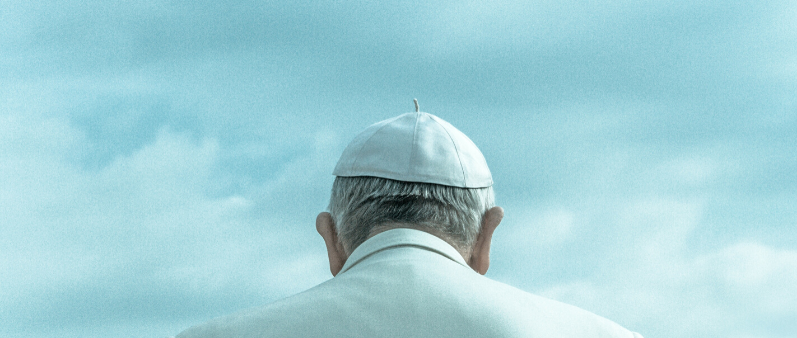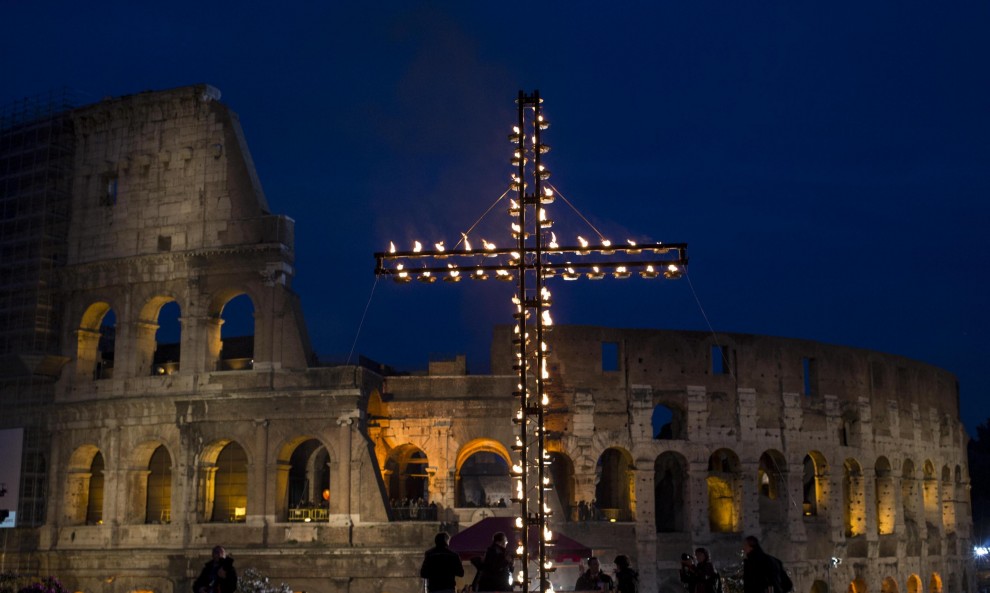
Easter 2020 – How Italians Are Keeping The Faith in the Time of Coronavirus
How COVID-19 is Reshaping Cherished Italian Traditions
With over 2 billion Christians in the world, there is no doubt that Easter is one of the most recognized religious holidays. However, if you’re looking for the ultimate Easter season celebration, look no further than Italy. From the massive Easter Mass celebration at the Vatican to the family picnicking fun of Pasquetta, no one celebrates this holiday quite like the Italians.
But, unfortunately, the ongoing global catastrophe of the coronavirus pandemic has put the kibosh on celebrations, even Easter. Millions of people are now looking for new ways to observe this vital holiday while maintaining all-important social distancing.
In this quick guide, we will explore a brief history of Easter in Rome and five important Easter traditions in Italy that have been reshaped by COVID-19.
Let’s hop right in.
A Very Brief History of Easter
Did you know? Many universal holiday traditions are actually rooted in Italy. From Christmas celebrations in Africa to the practice of Lent in the United States, loads of Christian holiday traditions derive from Italian culture. And you guessed it… Easter is no different.
Yes, Jesus is the reason for the season. But, do you know exactly where the tradition of Easter started? Give it up for… the Romans!
Picture this: Millenia ago, during the reign of Constantine I, a group of Roman religious authorities decided to make the Church and its celebrations consistent throughout the empire. That group, known as the First Council of Nicaea, created the first-ever iterations of Easter in Italy.
So, what are the most common Easter celebrations in Italy?
First up, we have Carnevale – carnival, a couple of weeks of masks, parades, and consumption leading up to Shrove Tuesday, or Mardi Gras, the day before Ash Wednesday.
Then people observe Lent. This period of reflection, atonement, and sacrifice, lasts 40 days. The last week of Lent is Holy Week, a 7-day series of events that recall Christ’s final days.
Holy Week culminates finally in the celebration of Easter, marking the resurrection of Christ. This holiday in Italy contains several of its own celebrations, including local and national observances, parades, and Easter Sunday Mass in St. Peter’s Square with tens of thousands of worshippers.
As you can see, these celebrations consist of large gatherings of people. The problem? COVID-19 has prevented celebrants from congregating.
The good news? Italian officials, including Papa Francesco (Pope Francis), have come up with a plan to help the world celebrate Easter safely. Keep reading to learn how you can experience a traditional Easter in Rome from the safety of your living room.
Where to Find Live-Streaming Vatican Easter and Holy Week Services Online
5 Important Easter Traditions in Italy and How COVID-19 is Reshaping Them in 2020.
Easter is ingrained in Italian society. Occasions like Good Friday and the Easter Vigil are celebrated on a much grander scale in Italy compared to other parts of the world.
Sadly, due to COVID-19, all Mass services have been banned… at least for public exhibition. However, Pope Francis has created a new schedule for the faithful to follow and has announced a decision to conduct ALL Holy Week celebrations in St. Peter’s Basilica, alone, at the Altar of the Chair.
1. Palm Sunday Mass
One of the biggest holy days is the Sunday before Easter. We’re talking about Palm Sunday. The Palm Sunday Mass at St. Peter’s typically draws up to 40,000 people.
Traditionally, the day starts in the Vatican and proceeds with the procession of palm leaves and olive branches into St. Peter’s Square. This symbolizes Jesus’ arrival in Jerusalem before his arrest and crucifixion. After the Palm Procession, a Mass service rounds out the day.
This year Palm Sunday falls on April 5. The Pope advises the faithful to follow along in prayer at home at 11 a.m. while he proceeds with the liturgical ceremony at the Altar of the Chair.
2. Holy Thursday, Good Friday, & Via Crucis
One of the biggest schedule changes in this year’s Easter celebrations is for Holy Thursday, or Maundy Thursday. For the first time, the morning Chrism Mass will NOT be held.
Another Maundy Thursday change will be the location of the Mass of the Lord’s Supper, held Thursday evening. That evening the Pope will celebrate it at the Vatican rather than at an institution like a hospital or prison. The traditional “washing of the feet” will not take place.
Good Friday in Italy and the Via Crucis in Rome mark the most solemn day in the Christian calendar. Traditionally this day is one of fasting and penance and reflection on Christ’s crucifixion.

Via Crucis, which translates to “The way of the cross,” is a major Good Friday ceremony where the Pope visits all twelve Stations of the Cross near the Roman Colosseum. He will then offer his blessing once the giant cross is lit just outside the Colosseum.
This year Good Friday is April 10, and the service will be celebrated at 6 p.m. with the liturgy of the Lord’s Passion. The Via Crucis will be held at 9 p.m.
Pope Francis invited prisoners in the Italian justice system to write this year’s meditations for the Way of the Cross at the Colosseum on Good Friday.
3. Holy Saturday & The Easter Vigil
The Easter Vigil Mass takes place on the evening of Holy Saturday. It is celebrated by the Pope in St. Peter’s Basilica, and thousands of worshippers usually fill the venue that night, just before Easter Sunday arrives. But this year the Vigil Mass will follow the same trend the other celebrations and the Pope encourages the faithful to observe and pray at home at 9 p.m.
4. Easter Mass at the Vatican
Finally, the day we’ve all been waiting for… Easter Sunday. Hallelujah! Easter Mass at the Vatican on Sunday morning traditionally sees one of the largest celebrations of Easter in the world.
In fact, St. Peter’s Square can hold as many as 80,000 people! Tens of thousands fill the Square to receive Sunday morning Mass from the Pope. Free tickets for this holy spectacle usually run out months in advance. However, with the coronavirus running rampant, Pope Francis will take the unprecedented step of conducting Easter Sunday mass without the public.
But you can still take part virtually by tuning in to Easter morning Mass at the Vatican on April 12 at 11 a.m. Afterward the Pope will give his traditional urbi et orbi, or “to the city and the world,” blessing.
5. Pasquetta (Easter Monday)
To top off the Easter season, Italians have a holiday on the Monday after Easter to celebrate Pasquetta, or “Little Easter,” by having picnics. Notable hotspots for Pasquetta activities include the Villa Borghese and the Villa Pamphili. Both are major Roman parks where celebrators can enjoy the day in the sun with friends and family.
However, since large public gatherings are banned and most public parks are closed, Pasquetta will have to be celebrated at home. Relatives and loved ones may FaceTime or Zoom call each other and traditional cuisine will be served at home.
From Italian Tradition to Italian Tongue
Although COVID-19 has been particularly devastating in Italy, the country is still united by its strong sense of culture, beautiful language, rich history, and love for family. If you would like to connect with the Italian culture on a more personal level, we suggest that you learn Italian with Pimsleur.
With the proven method offered by Pimsleur, you can start speaking the Italian language within 30 days.